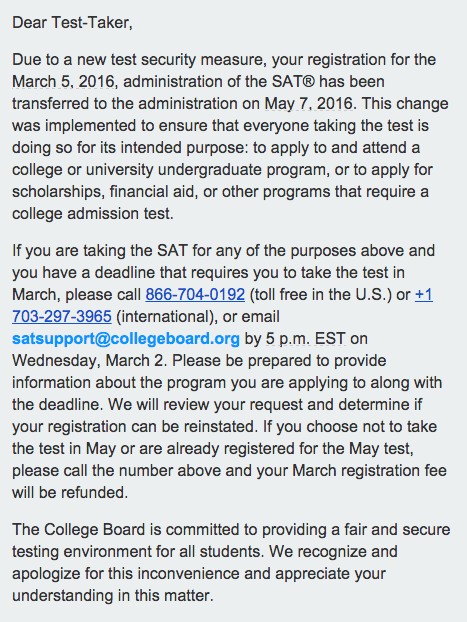An Older Guy Takes the SAT

About four years ago, I took the SAT as a 35-year-old and wrote about my experience in an essay that ran in Newsday, the popular Long Island newspaper. So when the College Board announced a redesigned SAT, I wanted to sit for the exam as early as possible to learn for myself how it would compare to the old SAT and to gain insight into how it would affect the thousands of students who we help prepare for the SAT and ACT each year. The following is my account of the experience taking the May SAT.
 Right off the bat, I made a classic rookie mistake. For each test, we remind our students: don’t go out the night before; eat a solid breakfast; bring granola bars or snacks with you and actually eat them during breaks. In other words, common sense things. So when I neglected to use the bathroom in the time before I was ushered into my testing room, it didn’t take me long to realize I was going to be in big trouble. Before the test itself started, it took about 30 minutes to complete the preliminaries on the “ID” page of the answer sheet: my name, test center, room number, etc. But once you’ve sat, you’ve sat. Immediately after completing this paperwork, we jumped right into the 65-minute Reading section. About 20 minutes into the section, the main thought preoccupying my mind was, “Am I going to be able to hold it?” The next thoughts were, “Do they give a break after this section? If not, can I request a break? If they say ‘no', I guess I will just have to leave because there is no way I can get through the next section.”
Right off the bat, I made a classic rookie mistake. For each test, we remind our students: don’t go out the night before; eat a solid breakfast; bring granola bars or snacks with you and actually eat them during breaks. In other words, common sense things. So when I neglected to use the bathroom in the time before I was ushered into my testing room, it didn’t take me long to realize I was going to be in big trouble. Before the test itself started, it took about 30 minutes to complete the preliminaries on the “ID” page of the answer sheet: my name, test center, room number, etc. But once you’ve sat, you’ve sat. Immediately after completing this paperwork, we jumped right into the 65-minute Reading section. About 20 minutes into the section, the main thought preoccupying my mind was, “Am I going to be able to hold it?” The next thoughts were, “Do they give a break after this section? If not, can I request a break? If they say ‘no', I guess I will just have to leave because there is no way I can get through the next section.”
We have all been in this situation at one time or another. It is hard to concentrate on anything, let alone a timed reading comprehension exam as difficult as the SAT. Of course, the point is not about me or my mistake: it’s about how many students score below their potential because of things other than their math or English ability: being hungry, not getting a good night’s sleep, a distracting student in the room, noise from an adjacent room (a colleague took the test in a high school in Queens where a student was practicing piano in the room next door––fortunately, she was pretty good), or any of a dozen other things can adversely affect students’ test-taking experiences.
 The analogy comparing the SAT or ACT to a 10K run is appropriate. You wouldn’t expect to run well if you didn’t get a good night’s rest the night before, or if you didn’t have something healthy to eat the night before and the morning of, or if you weren’t dressed to ensure you weren’t too hot or too cold. And sometimes, conditions that are entirely out of your hands will affect your time or your score. The best you can do is soldier through it and hope you get better conditions the next time.
The analogy comparing the SAT or ACT to a 10K run is appropriate. You wouldn’t expect to run well if you didn’t get a good night’s rest the night before, or if you didn’t have something healthy to eat the night before and the morning of, or if you weren’t dressed to ensure you weren’t too hot or too cold. And sometimes, conditions that are entirely out of your hands will affect your time or your score. The best you can do is soldier through it and hope you get better conditions the next time.
And let’s talk about training. No one would train for a 10K for a week or two, get a time that they were disappointed with, and then declare, “I am bad at running .” But that is what we do when it comes to the SAT and ACT. Kids put in a minimal amount of studying, get a disappointing score, and then declare they are “bad test takers.” This is absurd.
I bet if you trained two or three times a week for two months for a 10K and then ran it a second time, you would beat your first time. If you followed a smart training plan, I bet you would beat your first time by a significant amount. The same is true for the SAT and ACT: follow a plan or a method and you will raise your score significantly.
And make sure to use the bathroom while you are waiting to be sent down to your room!
Look for part 2 of this article soon, where I delve into each specific part of the test and share my thoughts about how students can attack each section.


